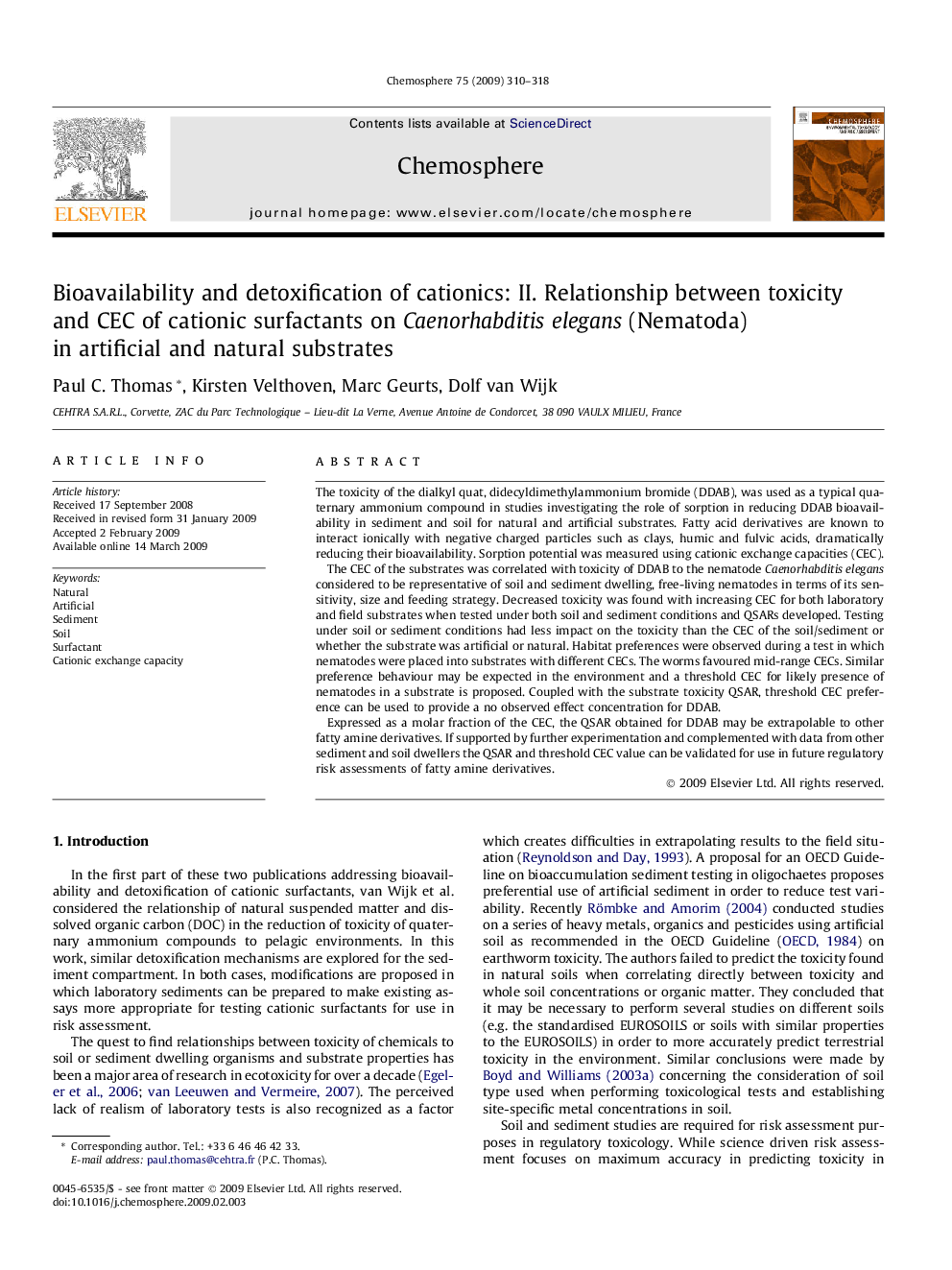| کد مقاله | کد نشریه | سال انتشار | مقاله انگلیسی | نسخه تمام متن |
|---|---|---|---|---|
| 4413239 | 1307670 | 2009 | 9 صفحه PDF | دانلود رایگان |

The toxicity of the dialkyl quat, didecyldimethylammonium bromide (DDAB), was used as a typical quaternary ammonium compound in studies investigating the role of sorption in reducing DDAB bioavailability in sediment and soil for natural and artificial substrates. Fatty acid derivatives are known to interact ionically with negative charged particles such as clays, humic and fulvic acids, dramatically reducing their bioavailability. Sorption potential was measured using cationic exchange capacities (CEC).The CEC of the substrates was correlated with toxicity of DDAB to the nematode Caenorhabditis elegans considered to be representative of soil and sediment dwelling, free-living nematodes in terms of its sensitivity, size and feeding strategy. Decreased toxicity was found with increasing CEC for both laboratory and field substrates when tested under both soil and sediment conditions and QSARs developed. Testing under soil or sediment conditions had less impact on the toxicity than the CEC of the soil/sediment or whether the substrate was artificial or natural. Habitat preferences were observed during a test in which nematodes were placed into substrates with different CECs. The worms favoured mid-range CECs. Similar preference behaviour may be expected in the environment and a threshold CEC for likely presence of nematodes in a substrate is proposed. Coupled with the substrate toxicity QSAR, threshold CEC preference can be used to provide a no observed effect concentration for DDAB.Expressed as a molar fraction of the CEC, the QSAR obtained for DDAB may be extrapolable to other fatty amine derivatives. If supported by further experimentation and complemented with data from other sediment and soil dwellers the QSAR and threshold CEC value can be validated for use in future regulatory risk assessments of fatty amine derivatives.
Journal: Chemosphere - Volume 75, Issue 3, April 2009, Pages 310–318